Translate this page into:
Easy and effective technique of preventing incisor flaring during Forsus treatment
This article was originally published by Wolters Kluwer and was migrated to Scientific Scholar after the change of Publisher.
Abstract
Lower incisor flaring is often encountered during Forsus treatment. To prevent this, consolidating the entire mandibular arch by ligature wire and cinching back the mandibular archwire has been recommended. However, lower incisor flaring might still occur due to ligature breakage from friction of the push rods and also cinching back the mandibular archwire might not be possible in few cases due to anatomic limitations. The following article describes an innovative technique to prevent any chances of lower incisor flaring during Forsus treatment in cases where cinching the archwire is not possible due to anatomic limitations. This method is simple, inexpensive, less time consuming and comfortable for the patient.
Keywords
Crimpable stops
Forsus appliance
lower incisor flaring
INTRODUCTION
Forsus appliance has been popularly used in the correction of Class II malocclusions. As the appliance exerts strong forces on the lower arch, in order to prevent lower incisor flaring, mandibular archwire distal to the second molars is cinched back.[1,2] However, this might not be possible in few cases due to anatomic limitations [Figure 1].
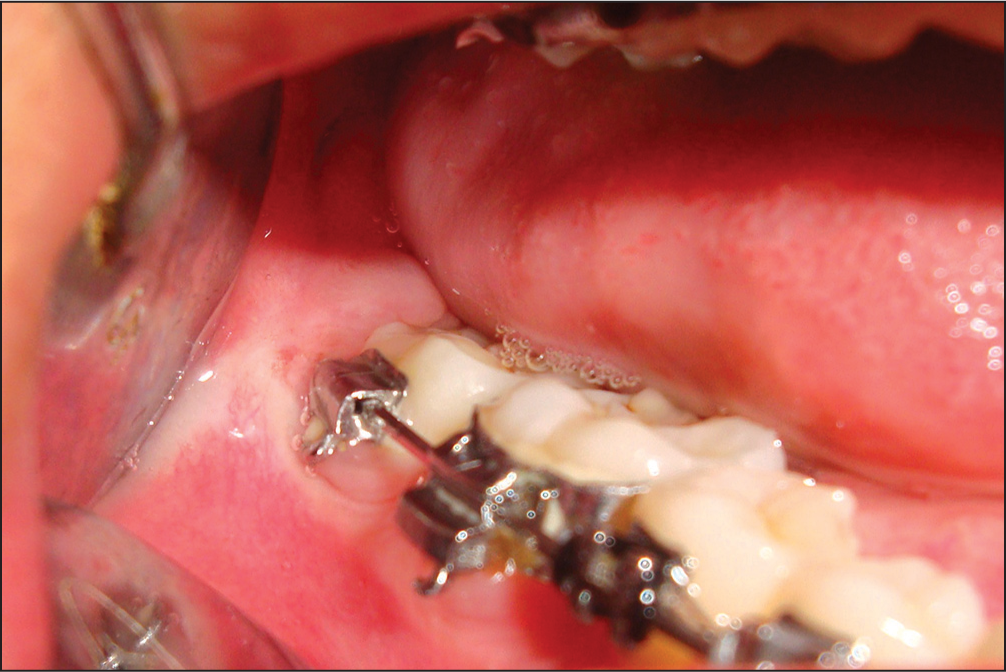
- Cinching the mandibular archwire not possible due to anatomic limitations
In such cases, consolidating the entire mandibular arch from second molar to second molar by ligature wire serves as a good alternative. Despite these efforts, lower incisor flaring might still occur due to ligature breakage from friction of the push rod [Figure 2]. This could lead to increased treatment time, as Forsus treatment would have to be discontinued, until the spaces are closed back. We have devised an innovative technique to prevent any chances of lower incisor flaring in such cases where cinching the archwire is not possible due to anatomic limitations.
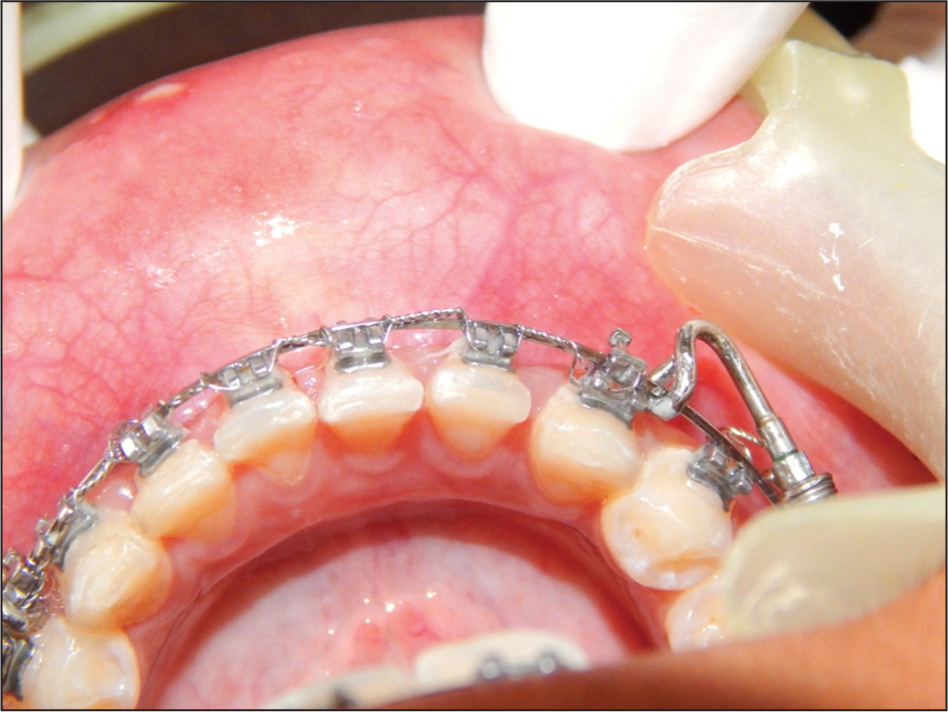
- Lower incisor flaring occurring due to ligature breakage from friction of the push rod
PROCEDURE
After engaging the mandibular archwire, two crimpable stops or crimpable hooks with the hook component cut-off (leaving behind only the crimpable portion) [Figure 3] are crimped immediately distal to the first molar tube [Figure 4].
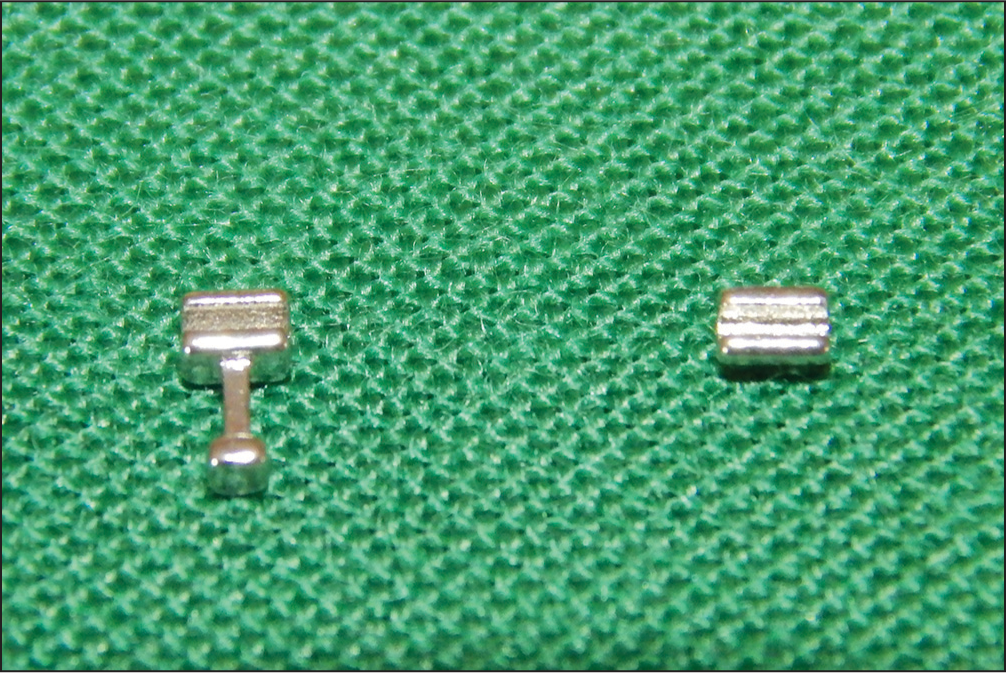 Figure 3
Figure 3- Crimpable hooks with the hook component cut off
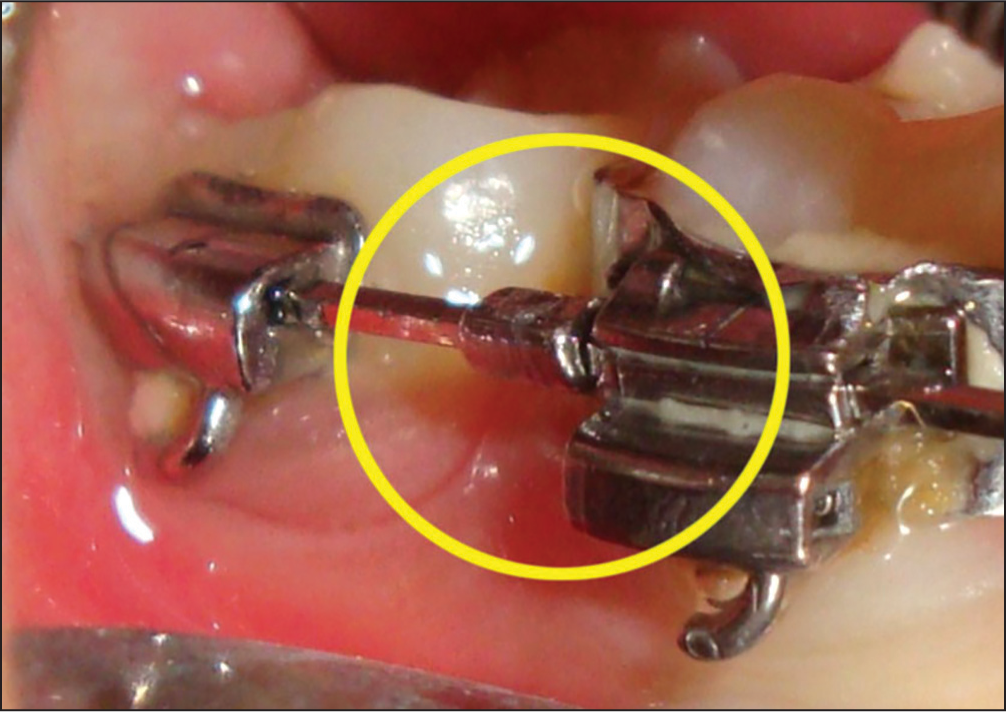 Figure 4
Figure 4- Crimped immediately distal to the first molar tube
A laceback is placed, tying the first and second molars together.
The Forsus appliance is now inserted [Figure 5].
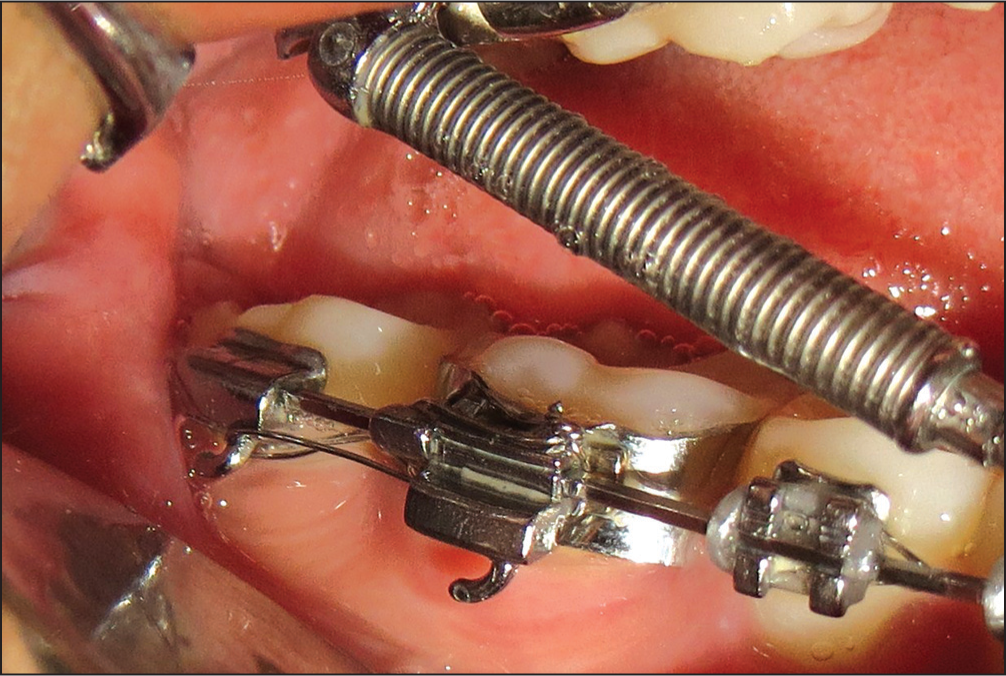 Figure 5
Figure 5- Forsus appliance is now inserted
CONCLUSION
The crimpable stops crimped distal to the first molar tubes act as stops preventing the archwire from sliding anteriorly, thus prevents flaring of the lower incisors. As the lacebacks hold the first and second molars together, the chances of any space opening distal to first molars is avoided. The advantages of this method are: It is simple, inexpensive, less time consuming, comfortable to the patient and more practical for use in day-to-day orthodontic practice.
Source of Support:
Nil.
Conflict of Interest:
None declared.
References
- Preventing delays in Forsus treatment after canine bracket failure. J Clin Orthod. 2013;47:108.
- [Google Scholar]






